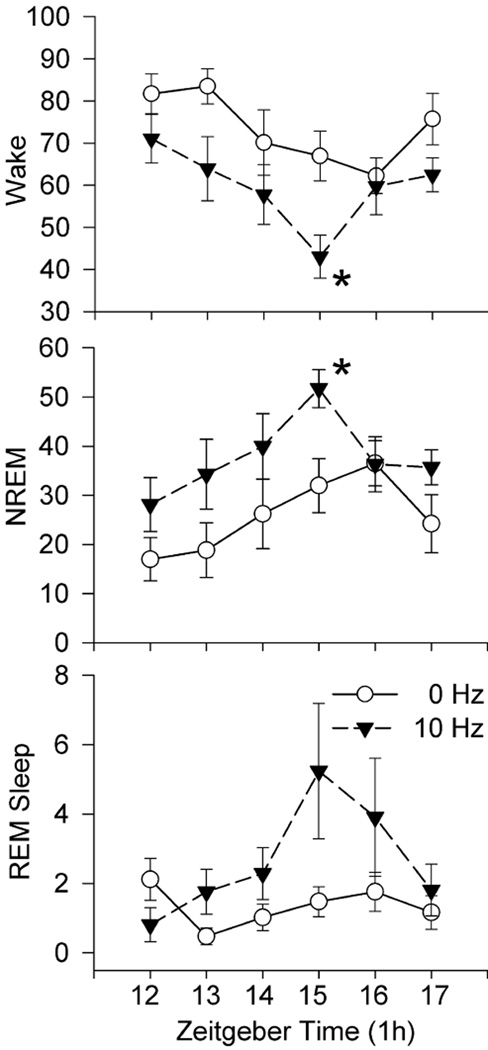Figure 6.
Time course of effects of optogenetic stimulation of astrocytes in the posterior hypothalamus on percent wake, NREM and REM sleep. 10Hz stimulation began at the onset of the lights-off period (Zeitgeber time 12) and continued for 6h (1minute on, 4 minutes off). A repeated measures ANOVA determined significant effect of stimulation (0 versus 10Hz) for wake, NREM and REM sleep. There was also a significant effect of the time (ZT) for wake and NREM, but not for REM sleep. There was no interaction (time x treatment) effect for wake, NREM or REM sleep. Asterisk denotes significant difference with the 0Hz for that hour (Holm-Sidak post-hoc comparison; p<0.05). There was no effect of 5 and 30Hz stimulation on sleep (figure 5 and supplementary figure 1). 10Hz stimulation produced a progressive decrease in waking and increased NREM with a peak after 4h. REM sleep lagged but also peaked at 4h. The waxing and waning of sleep suggests a physiological response mediated by adenosine (see profile of adenosine in response to 6h of sleep deprivation in Blanco et al., 2006).

